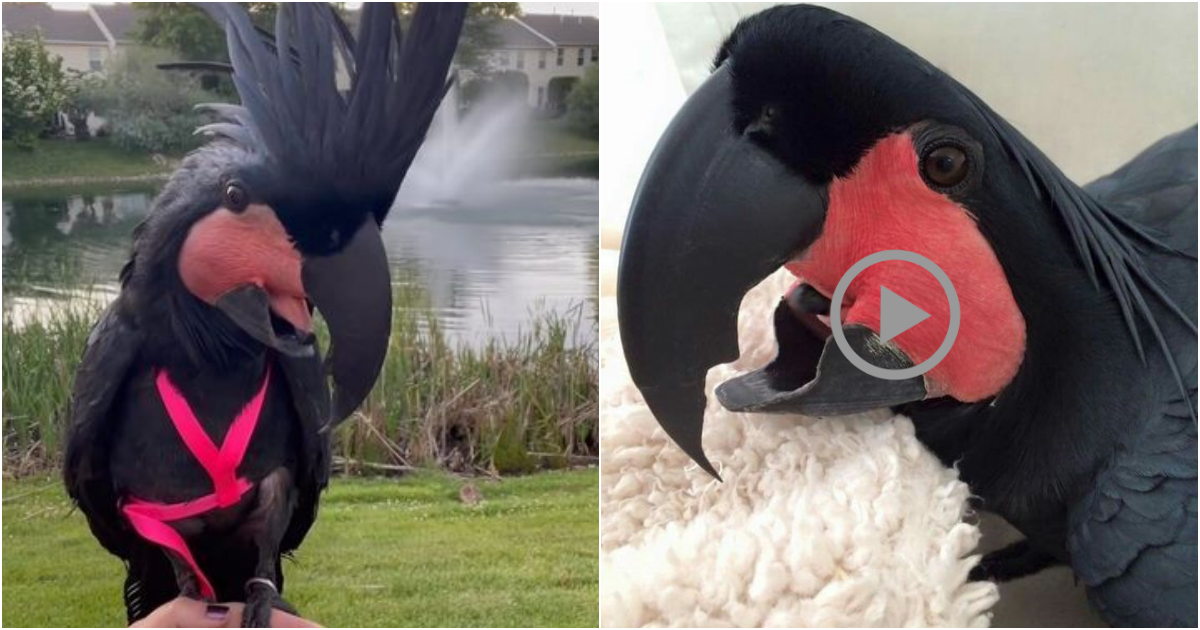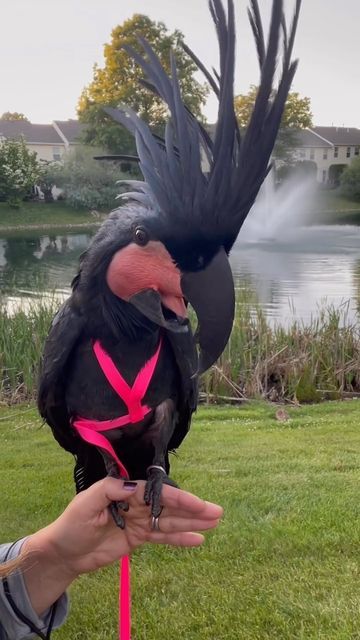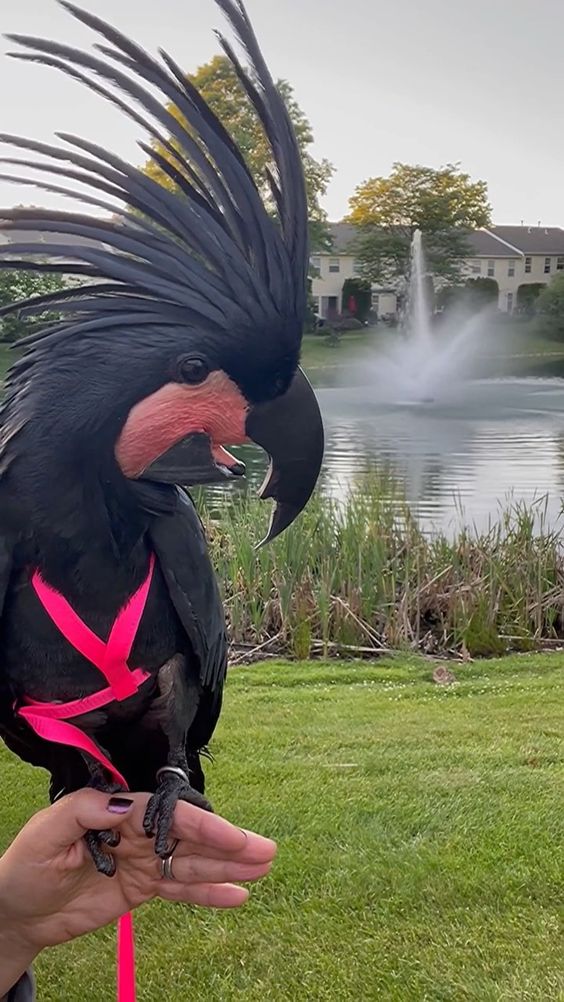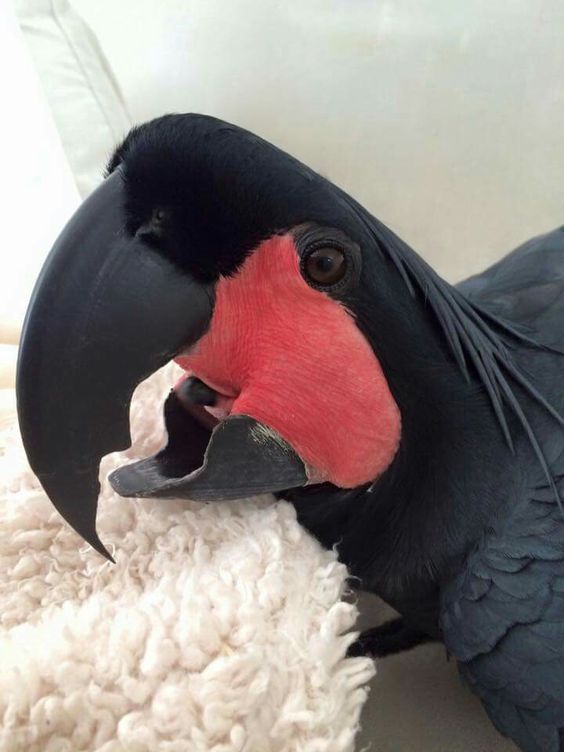The Majestic Palm Cockatoo: Exploring the Intelligence and Beauty of an Australian Rainforest Bird

The Palm Cockatoo (Probosciger aterrimus) is truly a captivating bird. Its large size, black plumage, and striking red cheek patches make it stand out in its rainforest habitat. The bird’s impressive height and wingspan contribute to its majestic appearance, making it a sight to behold.

 In terms of diet, the Palm Cockatoo is an omnivorous bird. It feeds on a wide range of food sources, including nuts, seeds, fruits, insects, and even small animals. This adaptability allows it to survive in diverse habitats within the rainforest ecosystem.
In terms of diet, the Palm Cockatoo is an omnivorous bird. It feeds on a wide range of food sources, including nuts, seeds, fruits, insects, and even small animals. This adaptability allows it to survive in diverse habitats within the rainforest ecosystem.  Unfortunately, like many other species, the Palm Cockatoo faces several threats to its survival. Habitat loss and fragmentation due to deforestation pose a significant risk, as the bird relies on intact rainforest habitats for nesting, feeding, and breeding. Additionally, the illegal pet trade remains a major concern, as these birds are highly sought after for their beauty and intelligence.
Unfortunately, like many other species, the Palm Cockatoo faces several threats to its survival. Habitat loss and fragmentation due to deforestation pose a significant risk, as the bird relies on intact rainforest habitats for nesting, feeding, and breeding. Additionally, the illegal pet trade remains a major concern, as these birds are highly sought after for their beauty and intelligence.Conservation efforts are being undertaken to protect the Palm Cockatoo and its habitats. These include initiatives to preserve and restore rainforest areas, raise awareness about the importance of conserving biodiversity, and combat illegal wildlife trade. By supporting these conservation measures, we can contribute to the preservation of this majestic and intelligent bird for future generations to admire and appreciate.



